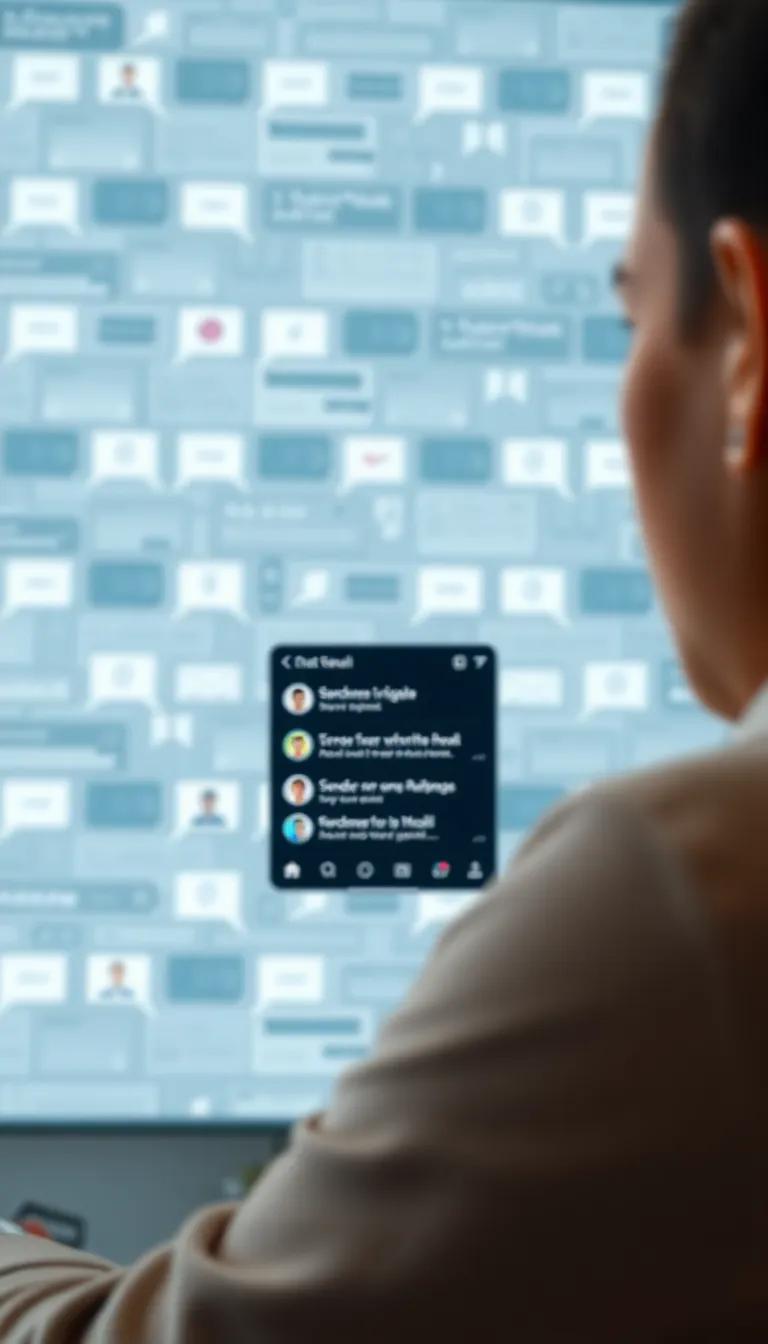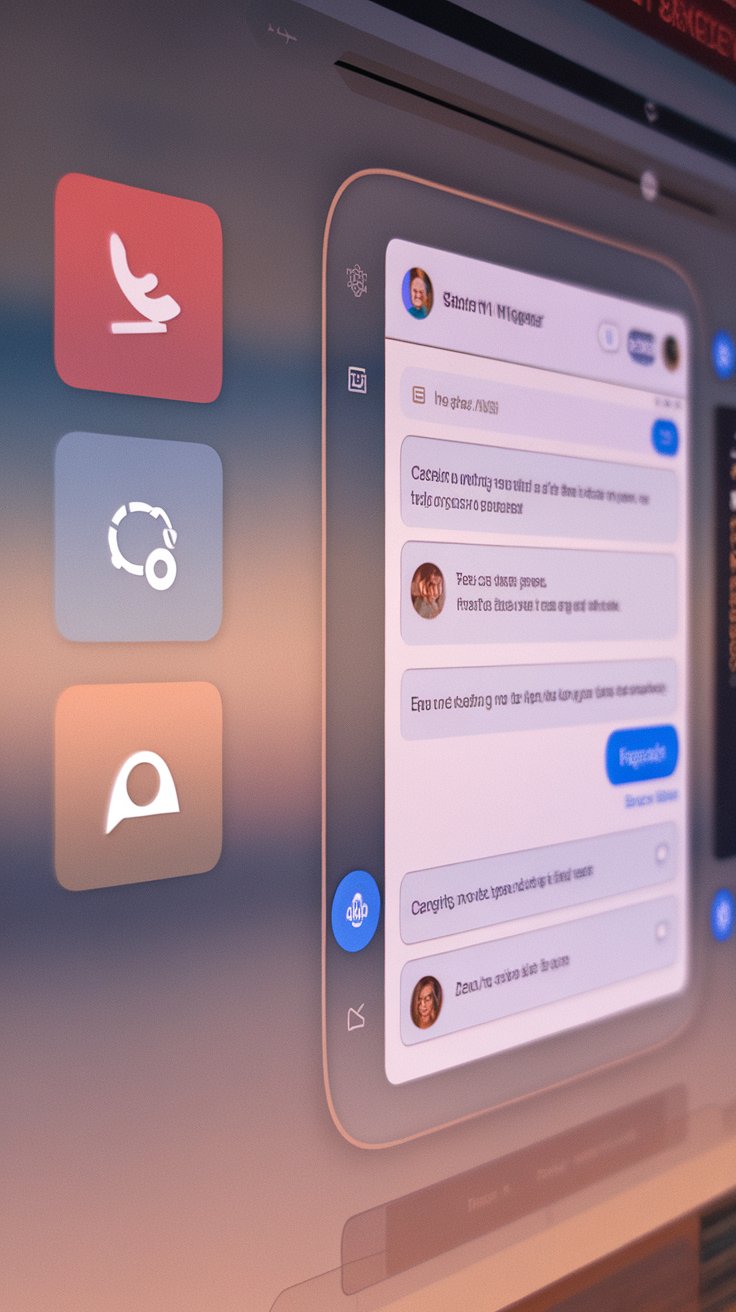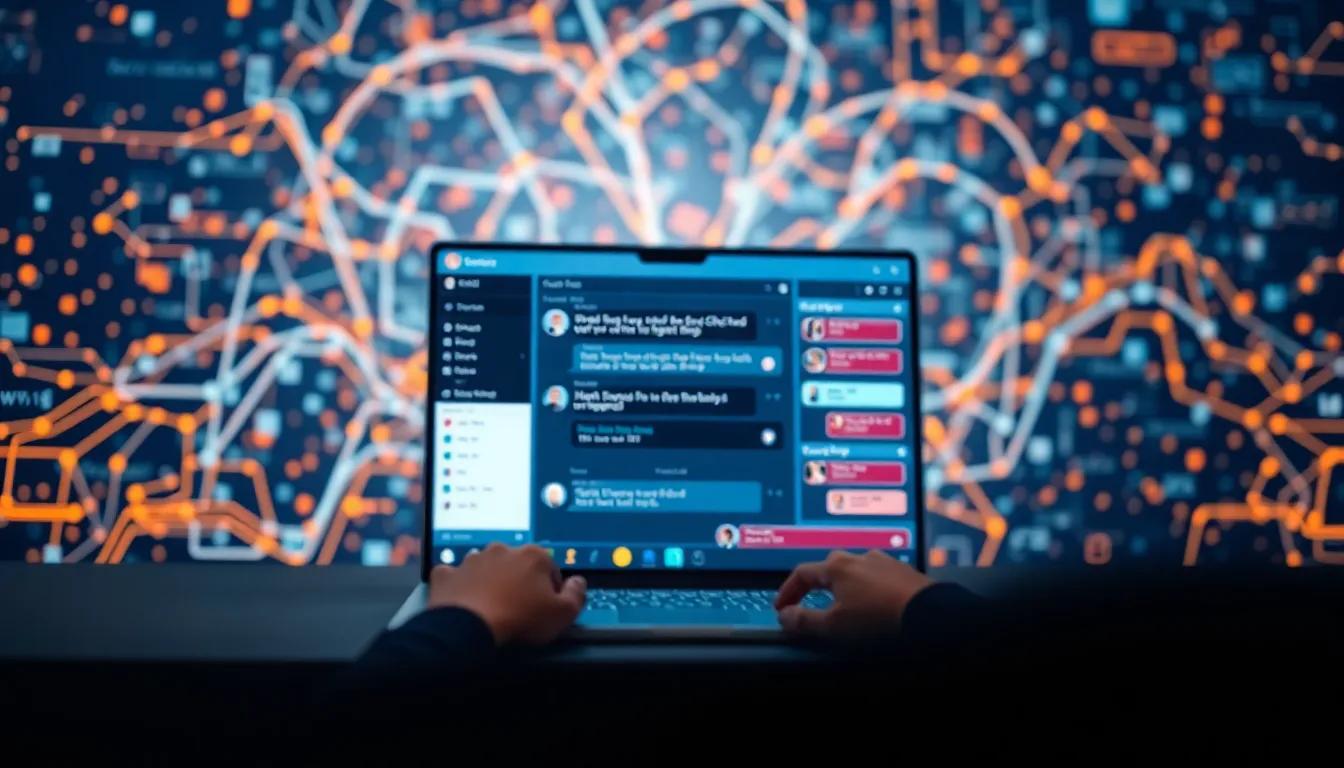Introduction
In today’s world, keeping people engaged on your website is super important if you want to build lasting relationships with your customers. One great way to boost that engagement is by adding a smart chat widget. This handy tool lets you communicate with visitors right away and improves their experience by offering quick help. Plus, by looking at how users act and what they like, chat widgets can personalize conversations, making them more relevant and meaningful.
This article digs into the different ways chat widgets can be used. We’ll look at how they help boost customer interaction and how to make the most of them. You’ll discover their features, what makes them great, and some easy tips to use them right. This can really change random visitors into regular customers. No matter if you run a small shop or a big company, using a cool chat widget can really help you connect better with folks and keep them happy.
Understanding Customer Engagement
Defining Customer Engagement
Customer engagement encompasses the ongoing interactions between a business and its customers across various platforms. This interaction is reciprocal, meaning it is not just the company disseminating information; it involves customers actively participating and responding. At its core, customer engagement is about building relationships that foster loyalty, understanding, and trust. Definitions of customer engagement have evolved over time but generally highlight two critical aspects: ensuring customer satisfaction through every touchpoint and expanding customers’ emotional and psychological commitment to the brand.
The Evolution of Engagement Practices
Historically, businesses relied on traditional marketing techniques to engage customers—think billboards, TV ads, and print media. However, the digital age has transformed these engagement practices significantly. The emergence of social media, email marketing, and, more recently, artificial intelligence, has shifted the focus to more direct and personal interactions. Companies are now collecting vast amounts of data to understand customer preferences better, allowing for highly tailored experiences. With the advent of smart chat widgets, engagement has become even more immediate and interactive, facilitating real-time conversations that draw customers in.
To understand the progression of customer engagement, consider the following milestones:
- Transition from passive advertising to interactive digital channels.
- The rise of customer feedback tools that allow instant reactions.
- Personalization of content enabled by data analytics and AI.
- The introduction of real-time communication tools, including chatbots and live chats.
The Impact on Customer Loyalty
Engagement directly correlates with customer loyalty. A well-engaged customer is more likely to remain loyal, leading to repeat purchases and customer advocacy. When customers feel connected and valued, they develop a positive perception of the brand, making them less susceptible to competitors’ offerings. Businesses that prioritize effective engagement strategies witness not only higher customer retention rates but also an increase in brand loyalty. The result is a sustainable growth model that supports long-term success in a competitive marketplace.
Therefore, understanding the dynamics of customer engagement is paramount for businesses that wish to thrive online. The incorporation of smart chat widgets as a part of this strategy amplifies engagement, making it crucial for creating excellent customer experiences that bolster loyalty. As engagement is redefined, companies must continue adapting their methodologies to nurture relationships with their customers actively.
Role of Chat Widgets in Online Engagement
Enhancing User Interaction Through Communication Tools
In the fast-paced digital environment, businesses are constantly seeking ways to connect meaningfully with their audience. Smart chat widgets have evolved into a vital tool for promoting online engagement. They serve as immediate points of contact, enhancing user interactions by fostering real-time communication that is intuitive and user-friendly. These tools not only provide answers to queries but also create a personalized experience that encourages customers to stay on your website longer.
A chat widget functions primarily as an interactive interface where visitors can easily reach out for assistance. It typically appears as a small icon on a webpage, which users can click to open a chat window. This accessibility encourages visitors to engage, reducing barriers that often prevent potential customers from seeking support. Chat widgets can operate 24/7, allowing businesses to provide instant responses regardless of the time of day, which significantly boosts engagement rates.
Key features of chat widgets contribute to their effectiveness in enhancing online engagement. Automated responses, for instance, allow customers to receive instant answers to frequently asked questions. This feature not only quickens response times but also alleviates the pressure on support teams. Furthermore, integration with various platforms enables chat widgets to pull in customer data, providing more personalized interactions. For example, when returning visitors initiate a conversation, the widget can greet them by name and reference their prior interactions, thus creating a more engaging and tailored experience.
Another feature that enhances customer interaction is the use of chatbots alongside human agents. AI-driven chatbots can handle routine inquiries, leaving more complex issues to human representatives. This symbiotic relationship ensures that users feel attended to, increasing their overall satisfaction and likelihood of return visits.
Chat widgets usually have built-in analytics that help businesses see how users are engaging with them and what they like. This info can help shape better strategies for connecting with customers, which means more successful marketing and customer support. When companies figure out how people use the chat widget, they can tweak their communication style to really address what their audience needs.
Choosing the Right Chat Widget for Your Website Increase Engagement with Tailored Solutions
When looking to heighten user engagement on your website, selecting the right chat widget is pivotal. A chat widget is more than just a communication tool; it’s an extension of your brand and can significantly influence how users interact with your site. To maximize the benefits of a chat widget, it’s vital to ensure it aligns with your specific business needs and resonates with your target audience.
Identify Your Business Needs
The first step in choosing the right chat widget is understanding what you hope to achieve with it. Common objectives include:
- Providing customer support
- Collecting leads
- Enhancing user experience
- Facilitating sales
By clearly defining your goals, you can focus on chat widgets that offer features tailored to these aspirations. For example, if your primary aim is lead generation, consider chat widgets that include automated responses and lead capture forms. On the other hand, if customer support is the main goal, look for tools with robust multi-channel capabilities.
Know Your Target Audience
Your target audience heavily influences the type of chat widget that will drive engagement. Consider factors such as:
- Demographics (age, location, preferences)
- Behavior patterns (how they interact with your website)
- Preferred communication styles (text, voice, video)
By understanding these elements, you can choose a chat widget that offers features your audience values, such as AI-driven chatbots for quick responses or live agents for more personalized interaction.
It’s also wise to consider the user experience the chat widget will provide. Features such as customization options allow you to match the widget’s design with your website’s aesthetics. In addition, functionality like mobile optimization ensures that users can engage easily, regardless of the device they are using.
As you assess different chat widgets, keep an eye on customer reviews and case studies. These can offer insights into how effectively each solution has met the needs of businesses similar to yours. Ultimately, the right chat widget should not only enhance communication but also support your business objectives while captivating your audience.
Best Practices for Implementing Chat Widgets Elevating Engagement Through Smart Communication Tools
Step-by-Step Approach to Effective Chat Widget Implementation
Implementing a chat widget on your website can significantly elevate user interaction and engagement. However, achieving success requires a strategic approach. Here’s a step-by-step guide to ensure effective communication through your chat widget.
1. Define Clear Objectives: Before adding a chat widget, establish what you aim to achieve. Are you focusing on increasing lead generation, providing customer support, or enhancing user experience? Clear objectives will guide your choices and help measure success later.
2. Choose the Right Widget Features: Select a chat widget that aligns with your objectives. Common features include automated responses, transcription options, and integration capabilities with CRM systems. Choose functionalities that cater both to your user base’s needs and your operational capabilities.
3. Design for Usability: Your chat widget should be visually appealing and easy to use. Opt for a design that matches your website’s aesthetics while ensuring visibility. User-friendly features, such as easy access buttons or drag-and-drop file sharing, enhance visitor interaction.
4. Implement Proactive Engagement Triggers: Instead of waiting for visitors to initiate a conversation, set up proactive triggers that invite users to chat. This could be based on time spent on a page, specific actions taken, or even the total value of items in their cart. Tailored messages can capture attention effectively.
5. Train Your Team: If you’re using live chat functionalities, ensure your support team is well-trained. They should understand common inquiries and have the tools to provide solutions quickly. Efficient communication enhances user satisfaction and retention, which are critical for boosting engagement.
6. Monitor and Adjust: After implementation, continuously monitor the performance of your chat widget. Check user feedback, engagement rates, and conversation metrics to identify areas of improvement. Make adjustments to enhance functionality and user experience based on performance data.
7. Test and Optimize: Regularly test different configurations, scripts, or responses to find what resonates best with your audience. A/B testing various approaches can reveal valuable insights into user preferences and effective communication styles.
By following these best practices, you can successfully implement a chat widget that significantly increases user engagement on your website. Effective communication not only enhances user experience but also fosters a connection that encourages conversions and loyalty.
Measuring Engagement Success Metrics for Assessing Chat Widgets
Understanding Key Metrics
To evaluate the effectiveness of chat widgets in boosting customer engagement, it is imperative to establish clear metrics. There are several vital metrics to consider, including but not limited to:
- Engagement Rate: This metric measures the percentage of visitors who interact with the chat widget compared to the total visitors. A higher rate indicates that the chat widget successfully captures users’ attention.
- Response Time: The speed at which a user receives answers to their inquiries directly impacts satisfaction and retention. Fast response times often correlate with higher engagement levels.
- Conversion Rate: By tracking the number of users who take a desired action (such as signing up for a newsletter or making a purchase) after interacting with the chat widget, businesses can measure its effectiveness in driving desired outcomes.
- User Satisfaction Scores: Implementing post-interaction surveys can provide insights into users’ overall experiences with the chat widget, helping identify areas for improvement.
- Drop-off Rate: This metric indicates the percentage of users who engage with the chat but do not complete their intended actions. A high drop-off rate may signal issues with the chatbot’s capabilities or user dissatisfaction.
Leveraging Metrics for Continuous Improvement
Once these metrics are established, the next step is to utilize them for ongoing enhancement. Regularly analyzing engagement rates allows businesses to identify patterns over time. For instance, if a chat widget shows a consistently low engagement rate, it may necessitate an evaluation of its placement on the site or its design. A/B testing different versions of the widget can be advantageous to see which variations yield better engagement outcomes.
Response time is another critical metric. Analyzing average response times can inform staffing needs for live chat agents or indicate if additional resources are required to optimize chatbot performance. Investing in machine learning and AI techniques can help improve response times and enable the chatbot to handle more complex queries effectively.
User satisfaction scores are super important for improving your chat widget. Asking for feedback after chats can help you find out what’s working and what’s not. This way you can make sure the widget keeps up with what users want. Creating a system to regularly gather and look at user thoughts helps make sure things keep getting better and better.
By measuring these metrics and employing data-driven strategies for improvement, businesses can ensure that their chat widgets remain effective tools for engagement, ultimately leading to improved user experiences and increased conversions.
Future Trends in Chat Technology
The trajectory of chat widget technology hints at an exciting evolution, with future advancements set to redefine customer engagement on websites. As artificial intelligence and machine learning continue to mature, we can anticipate chat widgets that are increasingly personalized and context-aware. This will allow them to not only respond to user inquiries but also understand user intent and behavior, leading to a more tailored interaction experience.
One significant trend on the horizon is the integration of natural language processing (NLP) capabilities, which will enable chat widgets to comprehend and generate human-like responses with remarkable accuracy. This evolution from mere keyword recognition to understanding nuanced conversations is aimed at creating fluid dialogue. Users will feel more connected, as the chat widget can recognize sentiment and adapt its responses accordingly. For example, if a user expresses frustration, the chat widget could offer empathy and solutions rather than generic replies.
Another noteworthy advancement is the incorporation of multi-channel capabilities. Users now interact across various platforms, including social media, messaging apps, and websites. Future chat widgets may seamlessly integrate with these channels, providing a unified experience. This omnichannel approach means that a conversation started on a company’s website could be continued on a mobile app or social media platform. The continuity of engagement across various touchpoints enhances customer satisfaction and loyalty.
When you combine chat widgets with predictive analytics, businesses can actually get a head start on figuring out what customers need before they even say anything. By looking at how users interact, companies can suggest solutions or products in advance. This move from just reacting to customers to really engaging with them makes for a better experience overall. Plus, it boosts the chances of making a sale since customers see the right options right when they need them.
Using augmented reality or AR could totally change the game for chat widgets. Picture this: a customer can try on a product virtually while chatting with a widget for help. This fun interaction really boosts user engagement and gives a unique experience that regular interfaces just can’t offer.
The future of chat widgets is looking really exciting. By putting more emphasis on personal touches, connecting across different platforms, using smart predictions, and incorporating augmented reality, businesses can build stronger relationships with their customers and really boost interaction on their websites.
Conclusions
Boosting interaction on your website is super important for creating a solid online presence and earning customer loyalty. A chat widget is a great helper in this goal since it makes it easy to talk directly and offer personalized support. It can also look at data and change up chats which really improves the user experience so customers feel appreciated and listened to.
As businesses continue to evolve in a highly competitive landscape, leveraging technologies such as chat widgets can make a substantial difference. Integrating these tools not only improves customer interactions but also contributes to better understanding consumer needs, thereby driving higher engagement levels. Adopting a smart chat solution could ultimately lead to increased conversions and sustained business growth.



















